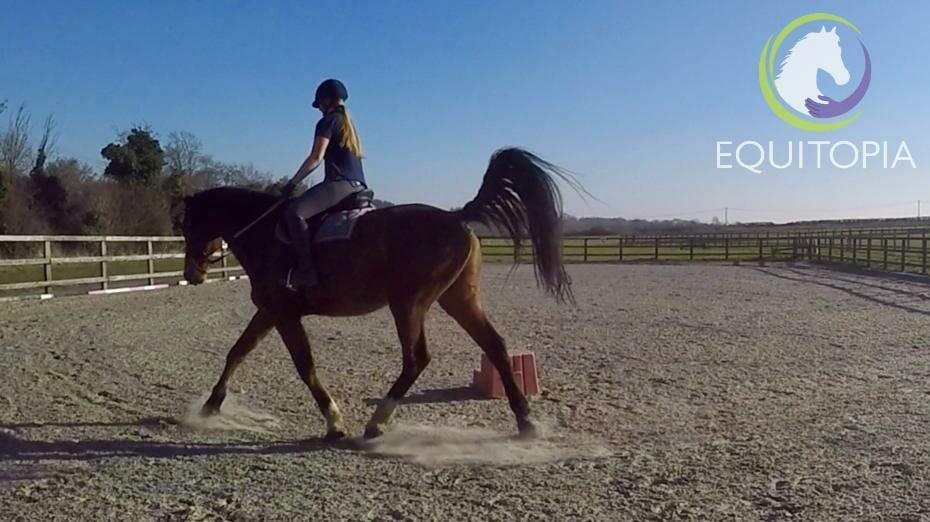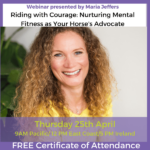YOUR POSITION AND YOUR HORSE’S HEALTH BY YASMIN STEWART
Last week, I was working with a pupil on her horse’s vertical balance. This horse has a classic case of modern sport horse syndrome – luscious long legs that attach to the tiniest chest. Hypermobile joints and a fantastically unstable stride – which is more irregular because he spends his life on high alert. Everything is scary to him. These traits make him an interesting ride. He fools his rider into living life in a sense of insecurity – never quite trusting him enough to lengthen her reins, never quite trusting him enough to relax her heels. His mental and physical instability with it makes you feel like you’re only one ‘something-just-flew-out-of-the-hedge’ away from eating sand.
Situations like this teach us to ride defensively. They make us reluctant to address our positions because, well so far anyway, we’ve done a pretty good job of staying on. They make us think it’s the horse that’s the problem.
It’s fascinating that what we often don’t realise is that we are facilitating our horse’s asymmetries. When they’re moving out of balance at high velocity – we are shifted preferentially to the outside of the movement – like we’re in a centrifuge. We are facilitating our horse’s balance – acting like a counterweight as they zoooom around the corner on two limbs. But often we don’t address this – before we can sort our positions we have to ‘fix the horse’. He needs to slow down first. He needs to be on the bit. He needs to… he needs to… he needs to…

I’M GOING TO ASK THE QUESTION: WHAT IF, RATHER THAN FIX THE HORSE, WE FIX OURSELVES?
I love teaching. Especially being able to enlighten my riders, allowing them to share the feeling of wonder at how incredibly sensitive these horses are. You know what helped the horse above? The rider stepped into her inside stirrup and angled her toes forward in the direction of travel. That is all it took to slow him down and shift him into a better vertical balance.
According to research, physical or postural asymmetry of a rider results in asymmetric distribution of force via the saddle (Meyners, 2004); force distribution increased towards the direction in which the rider leans (de Cocq et al., 2009); and rider crookedness can cause asymmetry in horse locomotion, resulting in an established asymmetric locomotor pattern (Greve & Dyson, 2012).
With this in mind, it’d be fair to make the observation that sometimes by actively trying to address our horse’s issues directly, we may be adding to them. If they’re running, or even falling, out of balance, we may be adding to the issue by trying to haul them into a different balance. Maybe instead we should synchronise with them. Align ourselves with their balance. Align our spine with theirs.
THINK ABOUT YOUR BALANCE
So next time you’re schooling your horse, rather than rolling your sleeves up and getting stuck in with ‘fixing’ them, shut your eyes and feel the movement. What are you doing with your body? Which stirrup do you favour the most? Are your thighs laying equally on either side of the saddle? That forwards-backwards-side-to-side movement of your pelvis, is it equal? Or do you fall more to one side than the other? Are your shoulders and hips in alignment?
You might just unlock something that enables your horse to find true balance.



